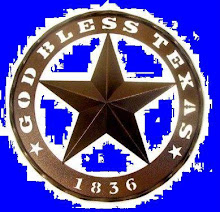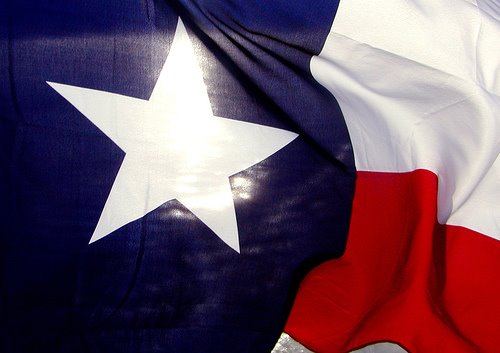The pharmacy tech was, maybe, 25 years old. She was working in the pharmacy this morning at the base hospital clinic I was at and she was helping to fill my prescriptions. To me, her age was important because she was wearing a pair of orange earrings that were the hippie “peace symbols.” The fact that she was just 25 puts her into that group of innocence, of not knowing. At 25, she was probably older than her mother was when her mother first saw the “peace symbol.” The fact that she was working in the pharmacy of a military medical clinic during a time when soldiers were deployed to Iraq and Afghanistan really has nothing to do with my observation. If I had asked her, I would have probably gotten the same reaction from her as I get from my 15 year old grandson who wears a t-shirt with the symbol. It really means nothing … it is a symbol of peace.
The iconic peace symbol is not the upside down broken cross inside a circle, as we have come to accept. The symbol of peace has always been the dove with an olive branch in its claws, or just the olive branch. This symbol dates back to the time of Noah when he released a dove from the ark that returned with an olive branch, telling Noah that the waters were receding off the face of the earth. The symbol we see today has not been the symbol of peaceful times … in fact quite the opposite.
The symbol started out in the ‘50s as the symbol of nuclear disarmament in England and Europe. It came to the United States about 1960 and was picked up by the anti-Vietnam War movement, beginning at the University of Chicago. A couple of years later, it was everywhere and was used to rally the anti-war crowd – mostly college students at the more liberal schools in the country. I remember walking down the street near San Jose State College and seeing the symbol painted on just about everything…graffiti. It was present when student “peace” demonstrations turned violent at The University of California at Berkley, and at Kent State University, resulting in the deaths of students participating in the demonstrations. The National Guard’s shooting of students, while tragic, was a direct result of students assaulting the inexperienced troops called out to protect University property. It was present when anti-war protestors rallied on the National Mall in 1969. And it was present during the infamous visit to North Vietnam by activist Jane Fonda in 1972. Google “1960s peace symbol ”or“ anti-Vietnam War movement and you will find pages of articles about how the peace movement, with its symbols, was responsible for the ending of the Vietnam. In actuality, if you search hard, you will find that it was more responsible for prolonging the war, resulting in the deaths of additional American servicemen.
During the early 1960s, Vietnam was an obscure little country “somewhere near Japan,” and as a 10th grade student in 1960, I wasn’t really sure where Japan was. I had no idea where Vietnam was and the term Indo-China was never used. The US had some military advisors there, but that was about all I knew, if I even knew that much. All through high school, the only foreign news stories I was aware of had more to do with the outrageous hairstyles of The Beatles and whether they would ever be more popular than The Beach Boys. After I graduated from high school, I had to register for the draft. My fear of being drafted didn’t involve going to war, but whether or not I was going to be able to go on my Mission before I was drafted. All of that changed in August 1964 when the Gulf of Tonkin Incident occurred. In the resulting resolution, the Congress gave President Johnson the authority to use military force in Southeast Asia without a formal Congressional declaration of war. The build-up of American forces in Vietnam was rapid, and I began to wonder if I would stay out of the draft long enough to even go on a Mission.
I entered the Mission Home in Salt Lake City in September 1965 and was told that Elder Gordon B. Hinckley, an Assistant to the Quorum of the Twelve, was the Church’s representative working to get Missionaries their ministerial draft deferments, but that it was not a done deal until the deferments were secured. Two days later, I got the word that my 2Y Ministerial deferment had been approved and I was going to be a missionary. As I came to the end of my mission, the escalation of the war was in full force and we were beginning to hear about the war in our homes on the evening news. I was afraid that I wouldn’t get my student deferment, but I did. Attending school in San Jose was an eye opener for me. Everywhere you saw the peace symbol, and every day, a demonstration. More than once my fiancée had to be evacuated from her office because of the tear gas from the police. After that year in school, I transferred to school in Southern California as I obtained a good job and was getting married. Upon my transfer, I couldn’t get the minimum required units and I lost my deferment. A month after my deferment expired, I was in the Army.
On April 30, 1975 the fall of Saigon was complete. The Americans had withdrawn and the country of South Vietnam ceased to exist. Since the end of what became known as the Indo-China War nearly 35 years ago, many books have been written by principals in the leadership of both sides in the conflict. From Rush Limbaugh: “How many of you remember the name General Giap from the North Vietnamese army? … He was a very famous, knowledgeable general in the North Vietnamese army. He's published his memoirs and here's a pull quote: "What we still don't understand is why you Americans stopped the bombing of Hanoi. You had us on the ropes. If you had pressed us a little harder, just for another day or two, we were ready to surrender. It was the same at the battle of Tet. You defeated us. We knew it. We thought you knew it. But we were elated to notice that your media was definitely helping us. They were causing more disruption in America than we could in the battlefield. We were ready to surrender. You had won." He makes the point the Vietnam War was not lost in Vietnam; it was lost [at home].”
For those of us who were there, the Hippies’ peace symbol will always generate hostile feelings towards those who extended our war. The Lord tells us to forgive, and I have forgiven those who participated in the anti-war movement; however, it is their cause and tactics I still remember, as do most soldiers who were there. I have looked at the names on the Vietnam Memorial Wall and wonder how many fellow soldiers whose names are on that wall would be alive today but for the “Peace symbol” and the movement it represented.

Thursday, August 20, 2009
The Peace Symbol
Posted by Mimi and Grandpa's House at 11:55
Subscribe to:
Post Comments (Atom)







1 Read My Post:
i love your stories. we're going to have to get them all compiled into a book at some point . . . get "porkchops in grey gravy" started sooner than later!!!
Post a Comment